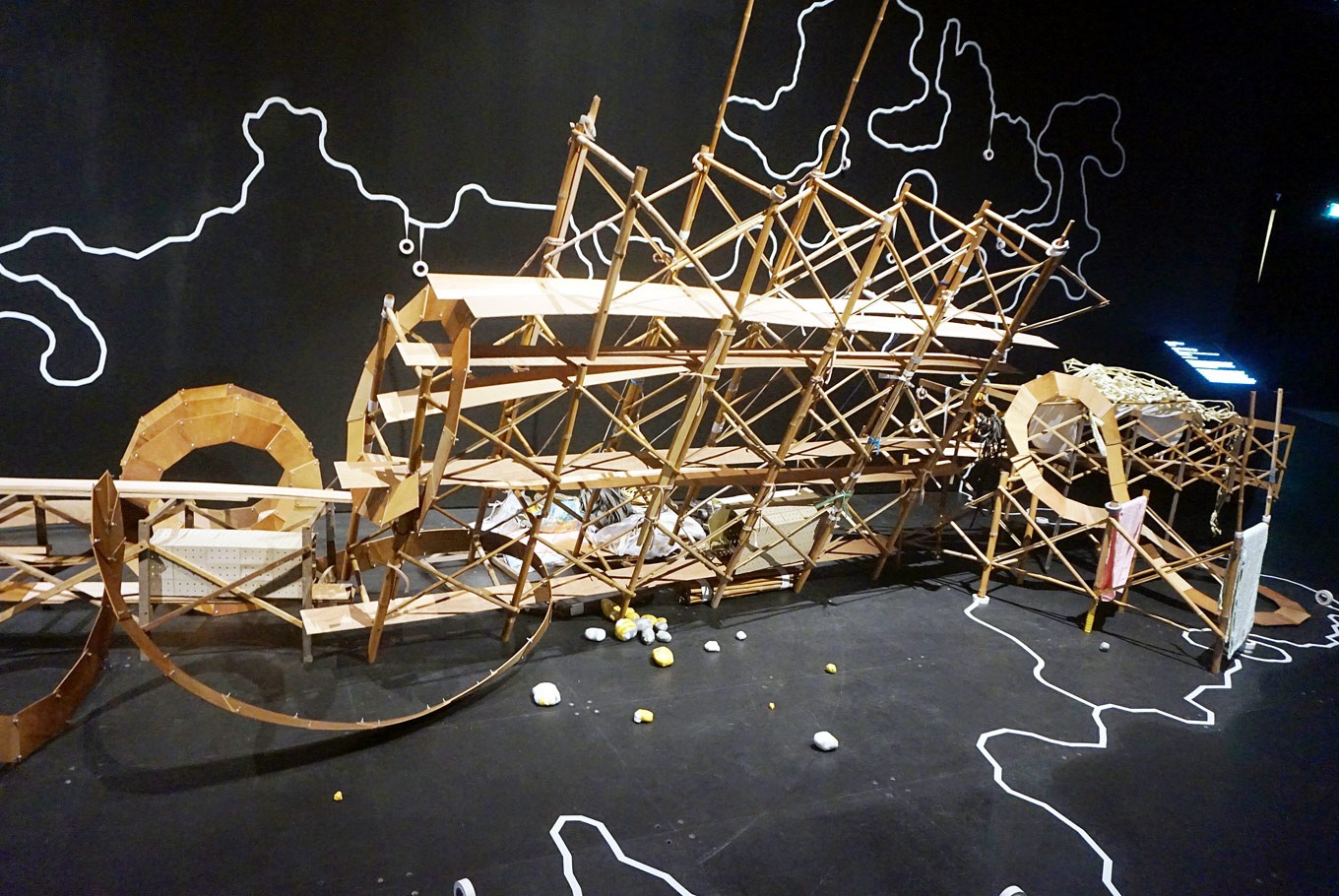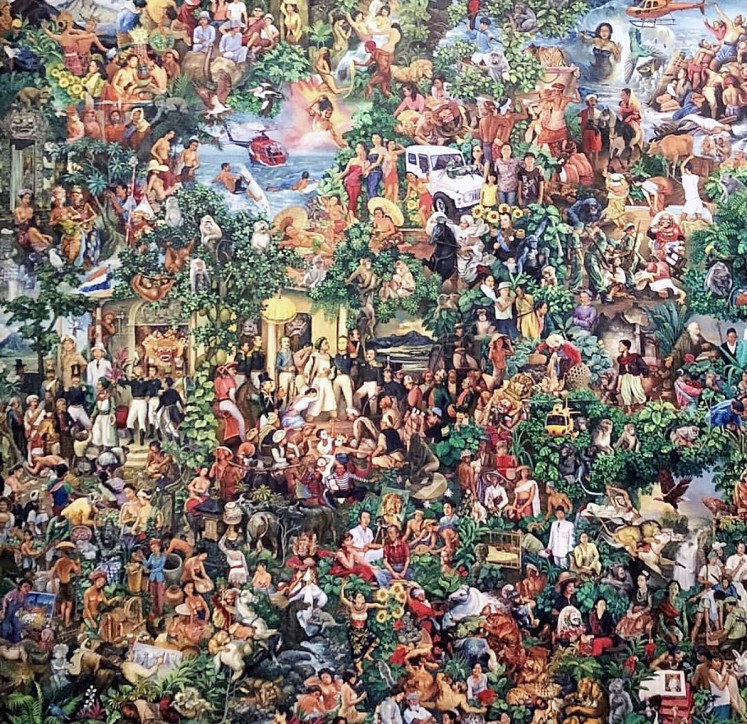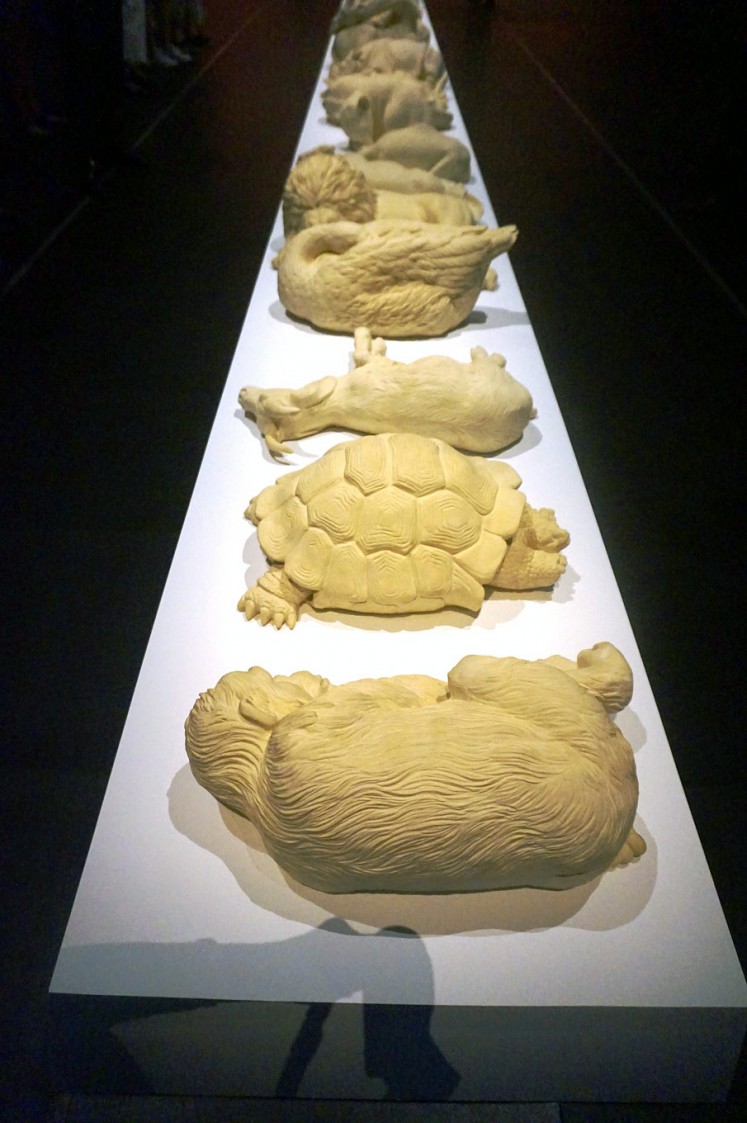Popular Reads
Top Results
Can't find what you're looking for?
View all search resultsPopular Reads
Top Results
Can't find what you're looking for?
View all search resultsGede Mahendra Yasa: Into an epic of miniature realism
Balinese artist Gede Mahendra Yasa is among the 15 finalists nominated for the triennial Singapore Art Museum’s Signature Art Prize.
Change text size
Gift Premium Articles
to Anyone
A
n exhibition showcasing the works of the 15 Signature Art Prize finalists is being held from May 25 to Sept. 2 at the National Museum of Singapore, with the winner scheduled to be announced at an award ceremony on June 29.
After Paradise Lost by Balinese artist Gede Mahendra Yasa is among the finalists for the award, which is organized by the Singapore Art Museum and sponsored by the Asia Pacific Breweries Foundation.
Viewing the pieces, it seems the jury panel of has been guided by a sense of urgency in past traditions upon which the contemporary works have been imagined. The paintings, in particular, bring to the fore the ongoing controversial discourse on what constitutes a painting, or what resembles one.
Gede Mahendra Yasa’s work, for instance, is considered a painting, but “without being painterly”, although the artist uses acrylic on canvas.
Uniquely, the canvas is entirely covered: there is no open space and no central point in the densely featured clusters of miniature images, which he calls “miniature realist narratives”.
“I am inspired by my cultural background as well as by the miniatures of Persia and China,” Gede said, adding that his work was based on art history.
In After Paradise Lost, the 51-year-old artist has used the traditional Balinese Batuan style, which is unique in that it includes multiple scenes in a single work.
With the scenes spread across the canvas and the absence of a central point, the artist wanted to treat all scenes equally.
Those familiar with art history will immediately detect amid the Balinese daily realities, the miniature versions of Raden Saleh’s nationalist take in The Arrest of Prince Diponegoro ( 1857 ) juxtaposed with Dutch colonial painter Nicolaas Pieneman’s The Submission of Prince Diponegoro to General De Kock (1830-1835), pitting the Indonesian and the Dutch take on the same subject.
Similarly, Theodore Gericault’s The Raft of Medusa is juxtaposed with Raden Saleh’s A Flood in Java (1865-1876).
The “painting of non-painting” concept is also featured in Thai artist Thasnai Sethaseree’s Untitled (Hua Lamphong), which is a layered collage of Thai Buddhist monks robes on canvas. In the work, brightly colored paper streamers are rendered in the traditional Lanna paper cutting technique, highlighting the yellow and red that marked the truce between what came to be known as the Red Shirts and the Yellow Shirts in Thai politics.
In addition to these paintings, the 15 selected works include video art. Of these, Mud Man — a three-channel video installation by artist and award-winning filmmaker Chikako Yamashiro — holds a special place. Visually stunning and sensual, she uses fictive and real-life elements from Okinawa, her birthplace, to capture the anguish of hosting American military bases.
Another standout piece is the piece by the Propeller Group titled AK-47 vs M16, featuring the two rifles pitted against each other, both in actuality and on-screen, symbolizing both liberation and violence, battle and war, with one invented by the Soviets and the other a brainchild of the United States army.
Despite of their controversial rivalrous backgrounds and the memory of battlefields and war, in art they are laid in ballistic gel blocks evoking a sense of the sublime and of immense beauty that testifies to the ability of art to be both a reminder and pacifier at the same time.
While all of the selected works have a strong concept, most require intense immersion to grasp their significance.
The Infinite Episode by Jitish Kallat (JP/Carla Bianpoen)Such is also true in the case of the mixed media installation of billiard tables, concrete sculptures and various videos by Japan’s Yuichiro Tamura in Milky Bay, which explores Yukio Mishima, one of Japans most influential 20th-century writers, and his obsession with body-building.
It also applies to Singaporean Shubiq Rao’s mixed media installation Pulp, which explores issues surrounding the destruction of books and libraries with video clips, giclée prints with text, ink drawings, books and a table.
The other finalists include the works of Bae Young Whan (South Korea), Yerbossyn Meldibekov (Kazakhstan), Au Sow Yee (Malaysia), Phan Thao Nguyen (Vietnam), Club Ate (Australia), Fang Wi Wen (Taiwan), Mata Aho Collective (New Zealand) and Leung Chi Wo+Sara Wong (Hong Kong).
The total art prize is S$100,000, with $60,000 awarded to the Grand Prize winner and $15,000 each to the two Jurors Choice Award winners. A People’s Choice Award worth $10,000 will be given to the work that receives the highest number of public votes on-site.
Given the importance of the jurors — Mami Kataoka, chief curator of Tokyo’s Mori Art Museum, Bose Krishnamachari, president of the Kochi Biennale Foundation, Joyce Toh, head of content and senior curator at the Singapore Art Museum, Gerard Vaughan, director of the National Gallery of Australia, and artist and independent curator Wong Hoy Cheong — it will be interesting to see to whom the panel ultimately award the Grand Prize.













